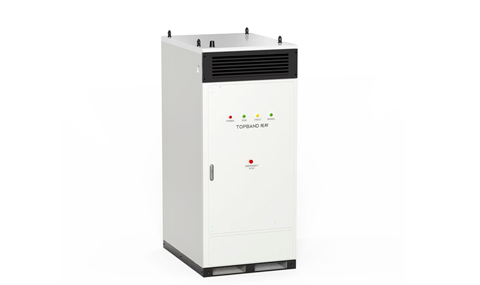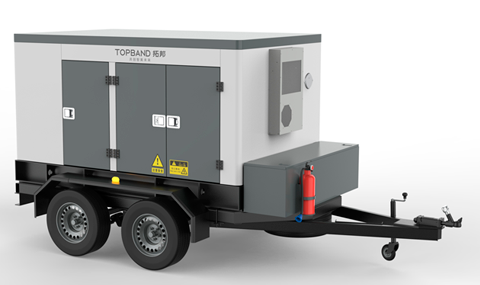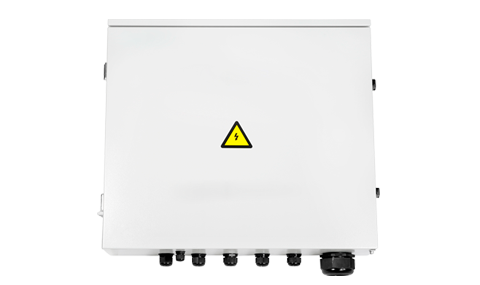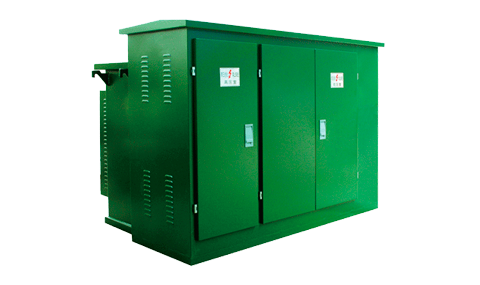What are the modes for energy storage stations to participate in the electricity market?
New energy storage is an important technology and basic equipment that supports the development of new power systems. The Action Plan for Peak Carbon Emissions by 2030 proposes that by 2025, the installed capacity of new energy storage will reach over 30 million kilowatts. New energy storage power stations (hereinafter referred to as "energy storage power stations") mainly refer to non pumped storage energy storage power stations with high power levels and superior comprehensive performance, which play an important role in promoting energy transformation and ensuring energy security.

How to promote the commercial application of energy storage power stations has been a common issue explored both domestically and internationally in recent years. The Guiding Opinions of the National Development and Reform Commission and the National Energy Administration on Accelerating the Development of New Energy Storage put forward specific requirements for improving policy mechanisms and creating a healthy market environment. How energy storage power stations can participate in the electricity market and make profits has become the key to their commercial application.
What are the modes for energy storage power stations to participate in the electricity market
Participating in the electricity market is a common energy storage business model abroad. Countries with relatively developed electricity markets establish the independent market entity status of energy storage power stations through legislation, allowing them to participate fairly in various segmented markets, improving market mechanisms, and formulating performance-based compensation mechanisms that reflect the value of various resources, providing institutional guarantees for energy storage power stations to compete fairly with other resources on the same platform.
The types of energy storage stations participating in the electricity market mainly include the electricity market, auxiliary service market, and capacity market, which play a comprehensive role in the value of energy storage and achieve multiple incomes. According to a report by the US Energy Information Administration (EIA), by the end of 2020, the capacity used for frequency response accounted for 59% of the total capacity in US utility scale (capacity greater than 1000 kilowatts) energy storage systems, 39% for ramp up or backup capacity, and 37% for participating in the electricity spot market.
The capacity electricity pricing model refers to the implementation of a two-part electricity pricing system for pumped storage power stations, which compensates for the capacity of the energy storage power stations. At present, most pumped storage power stations in China implement a two-part electricity pricing system. The capacity electricity price is used to compensate for the operating costs of the power station, while the electricity price is used to compensate for the power generation loss (4 kWh of electricity can generate 3 kWh of electricity). The capacity electricity price and power generation loss are included in the unified accounting of the operating costs of the local provincial power grid (or regional power grid), and are considered as factors for adjusting the sales electricity price. In order to promote the development of the energy storage industry, China has proposed in the "2019-2020 Action Plan for Implementing the Guiding Opinions on Promoting the Development of Energy Storage Technology and Industry" to "explore the establishment of an energy storage capacity electricity tariff mechanism", but relevant policies have not yet been introduced. Currently, only a few national energy storage demonstration projects have received capacity compensation.
The sharing mode mainly refers to the energy storage power stations configured within the new energy gathering station participating in the peak shaving auxiliary service market to provide peak shaving for multiple new energy stations. To maximize the peak shaving function of energy storage power stations, under certain market trading rules, energy storage power stations are allowed to peak shaving for other new energy stations, achieving resource sharing. After security check, the dispatching agency will call in sequence according to the clearing results of market transactions. At present, the operating rules of peak shaving auxiliary service markets in Qinghai and Xinjiang allow for bilateral trading between energy storage and new energy power stations, participation in market bidding, or direct invocation by dispatch agencies to achieve energy storage power station sharing.
The capacity leasing/spin off sales model refers to the purchase and leasing of independent energy storage plant capacity by a single or multiple social third parties, sharing the investment and construction costs of the energy storage plant. The difference between this model and shared energy storage lies in whether third parties such as new energy station owners have the asset ownership or exclusive use rights of fixed capacity energy storage stations. In areas where new energy is required to be equipped with energy storage, if purchasing or leasing independent energy storage power stations is more economical compared to investing in the construction of energy storage by new energy stations themselves, this model has certain development prospects. Owners of new energy stations can purchase or lease independent energy storage power stations with a certain capacity to meet the requirements of energy storage configuration at a lower price..
The current situation of energy storage power stations participating in electricity market transactions in China
At present, under the existing framework and rules of the electricity market, energy storage power stations can participate in medium and long-term electricity trading, as well as frequency regulation and peak shaving auxiliary service market trading. In terms of medium and long-term transactions, in early 2020, Qinghai Haixi Golmud Jingneng New Energy and Meiren Technology Energy Storage Power Station launched their first energy storage medium and long-term transaction.
In terms of peak shaving auxiliary services, currently more than 20 provinces or regions in China have introduced market operation rules for peak shaving auxiliary services (including trial operation), and the vast majority of provinces have included energy storage in the electricity market.
In terms of FM auxiliary services, currently six provinces or regions in China have introduced market operation rules for FM auxiliary services. Among them, Guangdong, Fujian, Shanxi, and Jiangsu allow energy storage to participate in frequency regulation, and energy storage power stations can participate in the frequency regulation auxiliary service market as independent entities or jointly with thermal power units, and receive compensation according to the regulation effect.
From the perspective of actual effectiveness, the investment and construction costs of energy storage power stations in China are still relatively high, and their utilization rate in a single market is low. Multiple values and system values are difficult to fully reflect, and it is difficult to compete with other alternative resources in the market.
The application of energy storage power stations still needs to be strengthened in the following aspects. In terms of development planning, China has proposed a quantitative goal for energy storage. The next step is to focus on clarifying the layout of energy storage power stations based on the actual needs of the power system, especially coordinating the power grid, pumped storage, and various other flexible resources. The planning of energy storage power stations should be incorporated into the power grid planning to guide the rational layout and orderly development of energy storage power stations. In terms of market access, the identity and admission conditions of energy storage power stations participating in the electricity spot trading market still need to be clarified, and the trading rules still need to be improved. Configuring energy storage has become an important condition for prioritizing the development of new energy in some regions, and the application scope of new energy configuration energy storage needs to be expanded. In terms of pricing mechanism, there is a lack of electricity pricing policies for energy storage power stations. Currently, China has not yet introduced policies related to charging prices, grid prices, and transmission and distribution prices for energy storage power stations. In the process of building a new type of power system, energy storage stations used to ensure the safety of the power system and reliable power supply are difficult to profit from the market. At present, there are no relevant support policies for the development of such energy storage.
Gradually promote the participation of energy storage power stations in the electricity market
According to the construction of the electricity market, the participation of energy storage power stations in the electricity market can be promoted in stages.
Phase 1: In the current electricity market environment, improve the trading mechanism of the auxiliary service market, leverage the dynamic response technology advantages of energy storage power stations, and focus on enhancing the competitiveness of energy storage power stations in the auxiliary service market. In order to meet the needs of high proportion of new energy and high proportion of power electronic equipment connected to the power system, the recently released "Management Measures for Power Auxiliary Services" have included new energy storage as a new subject for providing auxiliary services, and added auxiliary service varieties such as rotational inertia and climbing. On the basis of conventional peak shaving and frequency regulation market construction, trading rules for new auxiliary service varieties such as rotational inertia and climbing should be formulated according to system operation needs, and a compensation mechanism that reflects resource value and performance-based payment should be established. The technical advantages of energy storage power stations, such as fast response speed and flexible layout, should be fully utilized to create market conditions for mobilizing the regulation capacity of energy storage power station systems.
Phase 2: The primary stage of the electricity spot market, improving the rules of electricity trading, leveraging the ability of energy storage stations to adjust across time, and focusing on enhancing their profitability in the electricity spot market. At present, the first batch of 8 spot electricity pilot projects in China have all completed trial operation, and the second batch of 6 pilot projects are accelerating construction. On the one hand, market mechanisms should be improved to allow all types of resources, including energy storage stations, to participate fairly in the electricity spot market; On the other hand, we should improve the pricing mechanism, clarify the policies for charging and discharging electricity prices and transmission and distribution electricity prices for energy storage stations, use price signals to mobilize energy storage stations to participate in grid peak shaving, leverage the advantage of zero marginal cost of new energy, and jointly participate in electricity spot trading with new energy.
Phase Three: The mature stage of the electricity spot market, expanding the application of new formats and models for energy storage power stations, with a focus on enabling energy storage power stations to play multiple values in multiple markets. After the mature operation of the electricity spot market, it will replace the peak shaving auxiliary service market. Energy storage power stations can fully participate in the electricity market, auxiliary service market, and capacity market, providing regulation services at different time scales. When designing market mechanisms, full consideration should be given to the value of energy storage capacity and electricity consumption, allowing energy storage stations to participate in multiple markets and engage in time-sharing utilization to achieve multiple values. We should expand new formats and models including smart energy and virtual power plants, including energy storage power stations, to achieve diversified development of energy storage power stations.









